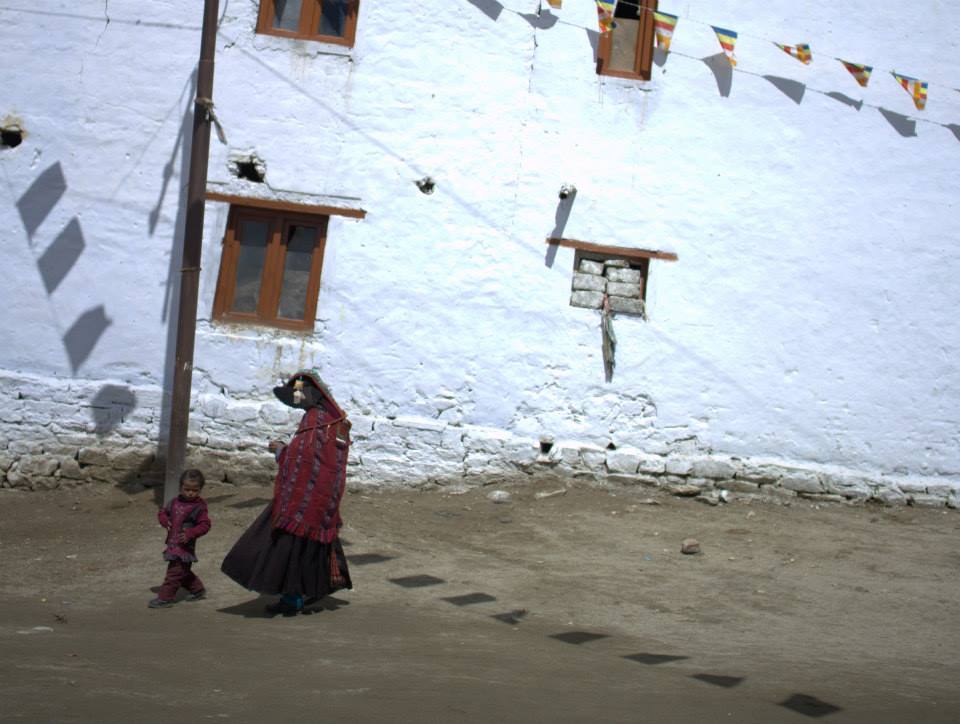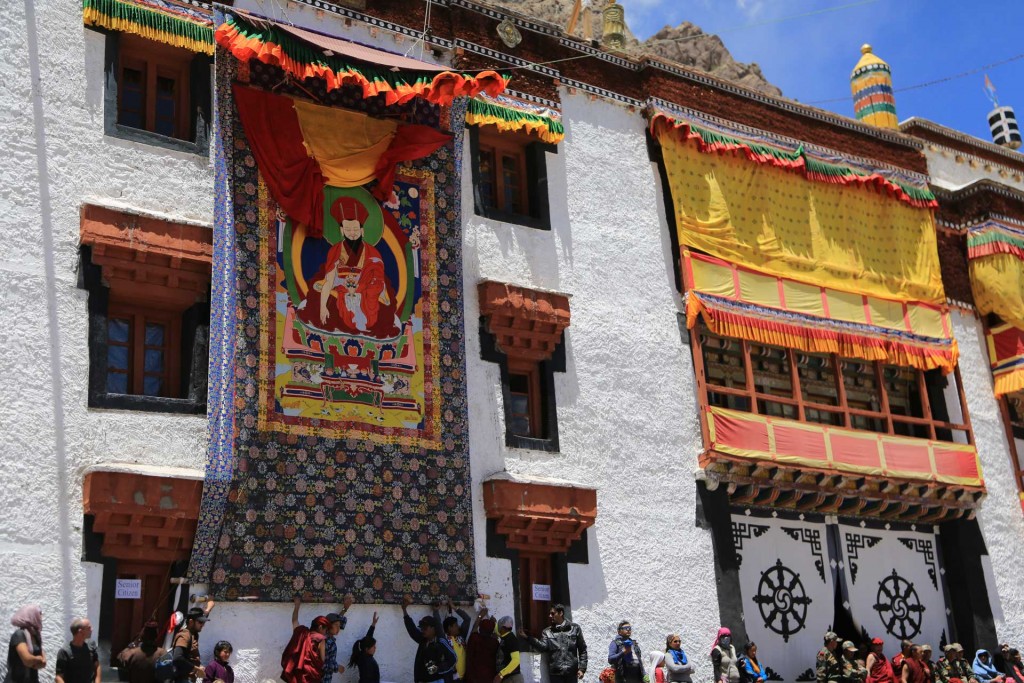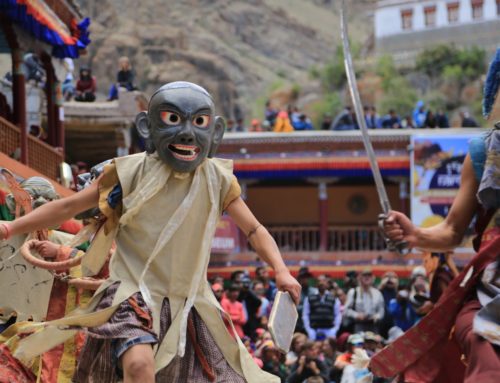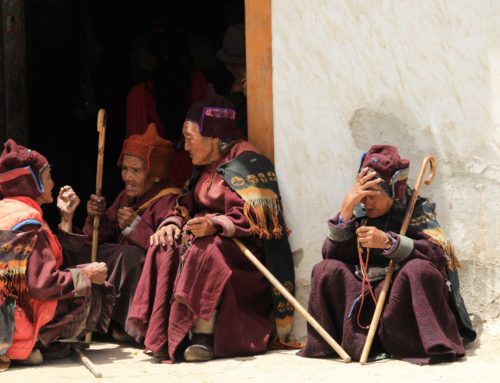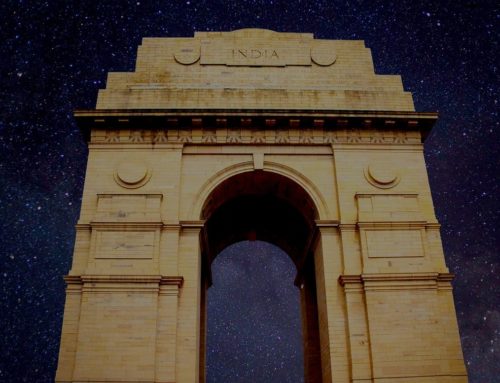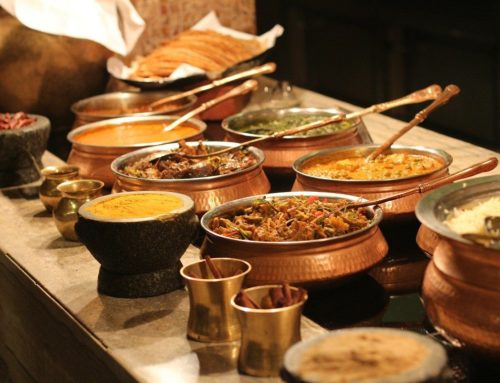![]()
It soars 8586 meters high: the Kangchenjunga. The third highest mountain in the world, the highest peak of Sikkim and India, and, since part of it lies on its territory, the second highest mountain in Nepal. There are so many different ways to write its name: Khangchendzonga (with or without “h”) in the original, Kangchenjunga when translated to English, or simply Kantsch (in German), as it’s commonly known by the more regular mountaineers. But the mountain is much more than just numbers, rankings and different spellings.
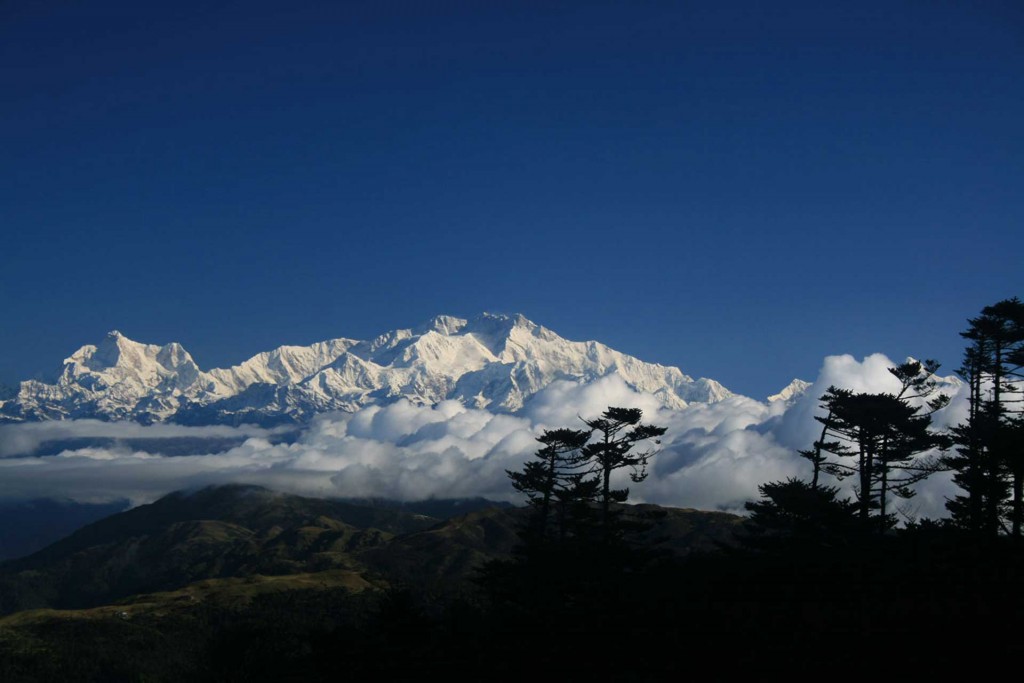
Mighty Khanchendzonga
Mountain of treasures
Kangchenjunga translates as something like “the 5 treasures of God” – and with its 5 symbolic peaks this mighty giant of the Himalayas is more than just a mountain. The inhabitants of Sikkim believe that in these peaks five treasures are hidden: gold, silver, gems, grain and sacred scriptures. The Sikkimese believe, like most Himalayan people, in guardian spirits and deities who roam the mountains. Dzonga is the most important mountain spirit of Sikkim, and his throne is precisely the Khanchendzonga, where he sits and looks down over Sikkim and its people. Others swear that the Dzonga were (or are?) really Yeti, and it is not hard to find local stories, third-hand testimonies and written documents about the existence of these snow creatures, especially in the region around the Khanchendzonga.
Expeditions to the sacred mountain
The Khangchendzonga was climbed for the first time by Joe Brown and George Band (both part of a British expedition) on May 25th, 1955. Following the request of the Chogyal (King of Sikkim), who didn’t want to see the honor of the mountain stolen and lose the protection of the god Dzonga, they stopped short of the actual summit. Since then, this tradition has become the norm, and all expeditions end just a bit before the mountain’s top. At the moment, the Khangchendzonga can be climbed only on the Nepalese side; the Indians allow no climbing expeditions.
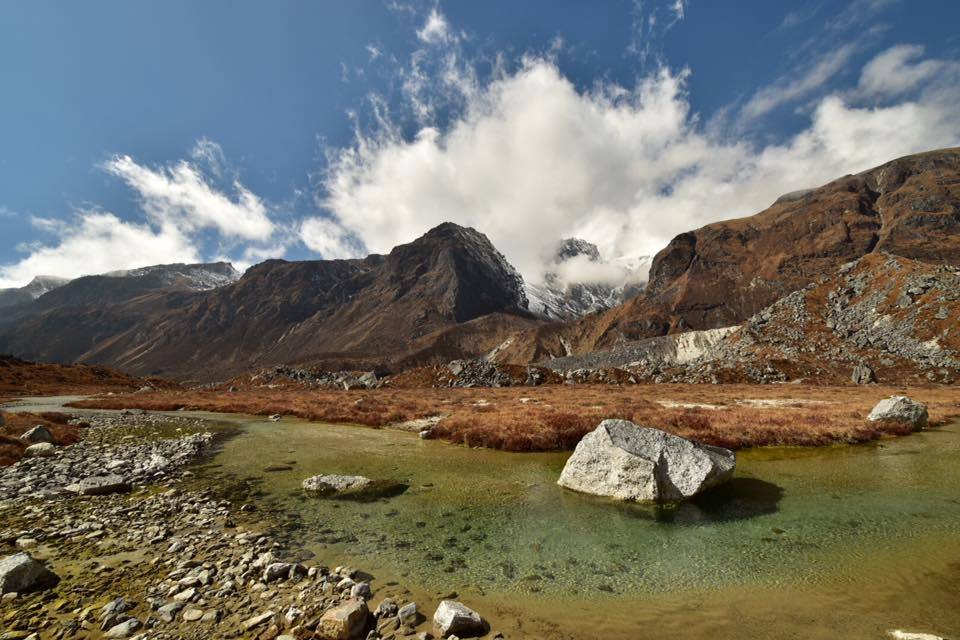
(c) Roland Amon
Nevertheless, one can at least hike to the foot and/or the base camp of the mighty mountain giant. For this there are several access options:
- Bakhim – Dzongri – Thangshing – Samuteng – Goechala
- Thangsing – Lam Pokhari – Kasturi Orar – Lapdong – Tashiding
- Yuksom – Tshoka – Dzongri
- Dzongri Basislager – Rathong – Khangerteng
- Lucanes Jakchen – Yabuk – Rest camp – Green lake
- Lachen – Thangsu – Muguthang – Thay La – Khyoksa La – Rest Camp – Green Lake
But even those who just want to admire the mighty mountain from a distance can (and will) feel rewarded, because there are several places in Darjeeling, Pelling, Sandakhphu and Rinchenpong that offer fantastic views of the Khanchendzonga. Good photography equipment is here always a good investment!
[tg_promo_box title=”Our Advice” border=”” shadow=”0″ button_text=”” button_url=””]Anyone who wants to enjoy a good mountain view should definitely arrive in autumn/winter, the season of clear skies. In spring, the view is not so good.[/tg_promo_box]Check out our tour Sikkim in Wanderschuhen – this route focuses strongly on the Khanchendzonga.
[tg_promo_box title=”This tour could be also interesting for you” border=”” shadow=”0″ button_text=”” button_url=””]
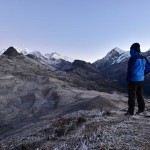 Sikkim & Dzongri-Trek: In the shadow of the mountaingod
Sikkim & Dzongri-Trek: In the shadow of the mountaingod
Dzongri-Trek to Goeche La; impressive trekking in the shadow of the Khanchendzonga; max. 10 participants
Date: 11.-27. November 2016
Price: 1.930 EUR


